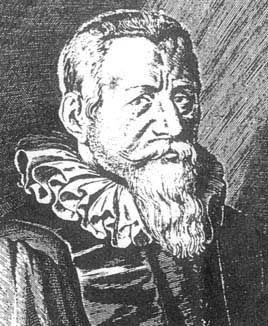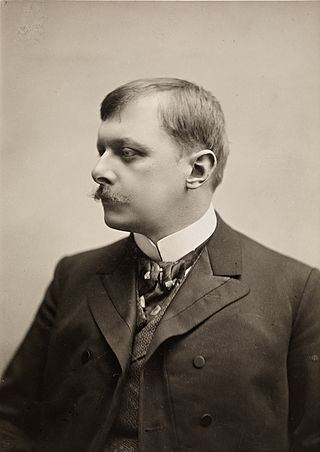Related Research Articles
The Gauss–Legendre algorithm is an algorithm to compute the digits of π. It is notable for being rapidly convergent, with only 25 iterations producing 45 million correct digits of π. However, it has some drawbacks and therefore all record-breaking calculations for many years have used other methods, almost always the Chudnovsky algorithm. For details, see Chronology of computation of π.
The number π is a mathematical constant that is the ratio of a circle's circumference to its diameter, approximately equal to 3.14159. The number π appears in many formulae across mathematics and physics. It is an irrational number, meaning that it cannot be expressed exactly as a ratio of two integers, although fractions such as are commonly used to approximate it. Consequently, its decimal representation never ends, nor enters a permanently repeating pattern. It is a transcendental number, meaning that it cannot be a solution of an equation involving only finite sums, products, powers, and integers. The transcendence of π implies that it is impossible to solve the ancient challenge of squaring the circle with a compass and straightedge. The decimal digits of π appear to be randomly distributed, but no proof of this conjecture has been found.

Ludolph van Ceulen was a German-Dutch mathematician from Hildesheim. He emigrated to the Netherlands.
Yasumasa Kanada was a Japanese computer scientist most known for his numerous world records over the past three decades for calculating digits of π. He set the record 11 of the past 21 times.
Peter Benjamin Borwein was a Canadian mathematician and a professor at Simon Fraser University. He is known as a co-author of the paper which presented the Bailey–Borwein–Plouffe algorithm for computing π.

Fredrik Carl Mülertz Størmer was a Norwegian mathematician and astrophysicist. In mathematics, he is known for his work in number theory, including the calculation of π and Størmer's theorem on consecutive smooth numbers. In physics, he is known for studying the movement of charged particles in the magnetosphere and the formation of aurorae, and for his book on these subjects, From the Depths of Space to the Heart of the Atom. He worked for many years as a professor of mathematics at the University of Oslo in Norway. A crater on the far side of the Moon is named after him.

Johann Martin Zacharias Dase was a German mental calculator.
Chudnovsky is an Ashkenazi Jewish surname of Ukrainian origin. It may refer to

The table below is a brief chronology of computed numerical values of, or bounds on, the mathematical constant pi. For more detailed explanations for some of these calculations, see Approximations of π.
William Shanks was an English amateur mathematician. He is famous for his calculation of π (pi) to 707 places in 1873, which was correct up to the first 527 places. The error was discovered in 1944 by D. F. Ferguson. Nevertheless, Shanks's approximation was the longest expansion of π until the advent of the digital electronic computer in the 1940s.

Approximations for the mathematical constant pi in the history of mathematics reached an accuracy within 0.04% of the true value before the beginning of the Common Era. In Chinese mathematics, this was improved to approximations correct to what corresponds to about seven decimal digits by the 5th century.
Charles Samuel Peskin is an American mathematician known for his work in the mathematical modeling of blood flow in the heart. Such calculations are useful in the design of artificial heart valves. From this work has emerged an original computational method for fluid-structure interaction that is now called the “immersed boundary method", which allows the coupling between deformable immersed structures and fluid flows to be handled in a computationally tractable way. With his students and colleagues, Peskin also has worked on mathematical models of such systems as the inner ear, arterial pulse, blood clotting, congenital heart disease, light adaptation in the retina, control of ovulation number, control of plasmid replication, molecular dynamics, and molecular motors.
The Chudnovsky algorithm is a fast method for calculating the digits of π, based on Ramanujan's π formulae. It was published by the Chudnovsky brothers in 1988.

Liu Hui's π algorithm was invented by Liu Hui, a mathematician of the state of Cao Wei. Before his time, the ratio of the circumference of a circle to its diameter was often taken experimentally as three in China, while Zhang Heng (78–139) rendered it as 3.1724 or as . Liu Hui was not satisfied with this value. He commented that it was too large and overshot the mark. Another mathematician Wang Fan (219–257) provided π ≈ 142/45 ≈ 3.156. All these empirical π values were accurate to two digits. Liu Hui was the first Chinese mathematician to provide a rigorous algorithm for calculation of π to any accuracy. Liu Hui's own calculation with a 96-gon provided an accuracy of five digits: π ≈ 3.1416.
A timeline of numerals and arithmetic.

Maria Chudnovsky is an Israeli-American mathematician working on graph theory and combinatorial optimization. She is a 2012 MacArthur Fellow.
John William Wrench, Jr. was an American mathematician who worked primarily in numerical analysis. He was a pioneer in using computers for mathematical calculations, and is noted for work done with Daniel Shanks to calculate the mathematical constant pi to 100,000 decimal places.
Leslie Frederick Greengard is an American mathematician, physicist and computer scientist. He is co-inventor with Vladimir Rokhlin Jr. of the fast multipole method (FMM) in 1987, recognized as one of the top-ten algorithms of the 20th century.
References
- ↑ Martin Davis (February 10, 1998). "Chudnovsky's contribution to MRDP". FOM mailing list. Retrieved 27 November 2022.
- 1 2 "Gregory V. Chudnovsky - MacArthur Foundation". www.macfound.org. MacArthur Foundation . Retrieved 19 October 2020.
- ↑ Kiernan, Vincent (March 20, 1998). "With Abstruse Mathematics as a Tool, 2 Brothers Tackle Real-World Problems". The Chronicle of Higher Education . Retrieved 19 October 2020.
- ↑ Preston, Richard (2008). Panic in Level 4: Cannibals, Killer Viruses, and Other Journeys to the Edge of Science. Random House Publishing Group. ISBN 978-1-58836-728-0 . Retrieved 19 October 2020.
- ↑ Preston, Richard (March 1, 1992). "The Mountains of Pi". The New Yorker .
- ↑ Arenson, Karen W. (24 December 1997). "For Brilliant Brothers, Joining Mathematics Faculty Is a Quantum Leap". The New York Times . Retrieved 19 October 2020.
- ↑ "NOVA Science NOW". PBS. 2005-07-26.
- ↑ Preston, Richard (2005-04-11). "Capturing the Unicorn". The New Yorker.
- ↑ "The Chudnovsky Brothers | NYU Tandon School of Engineering".